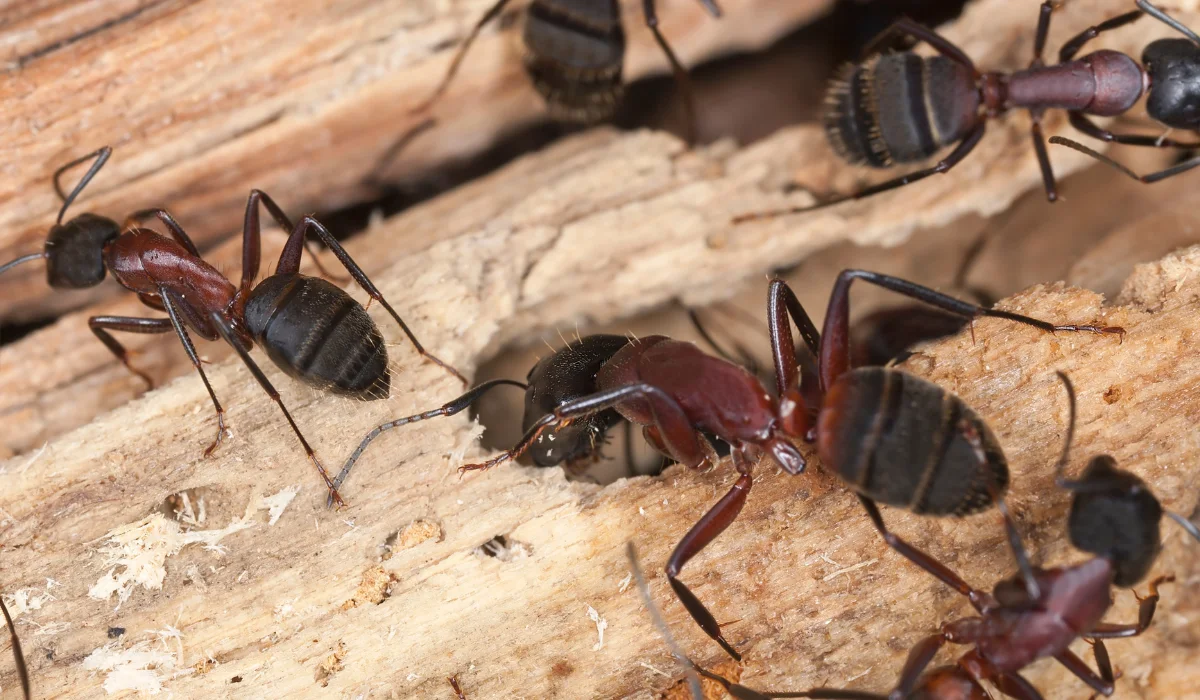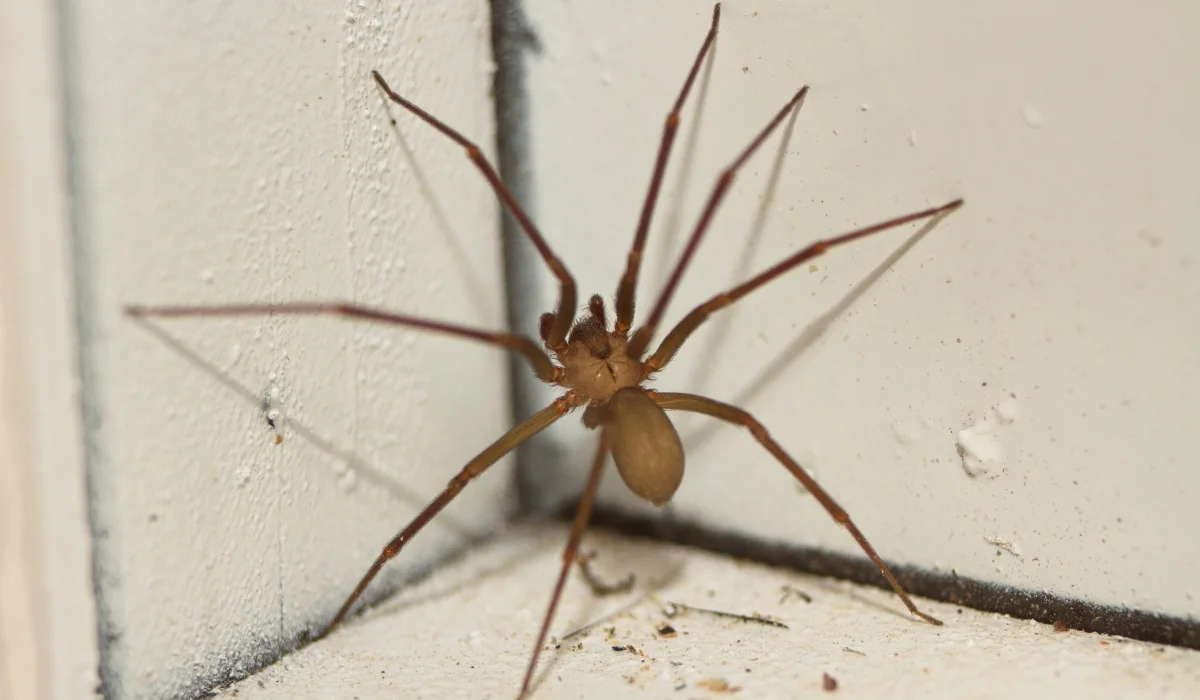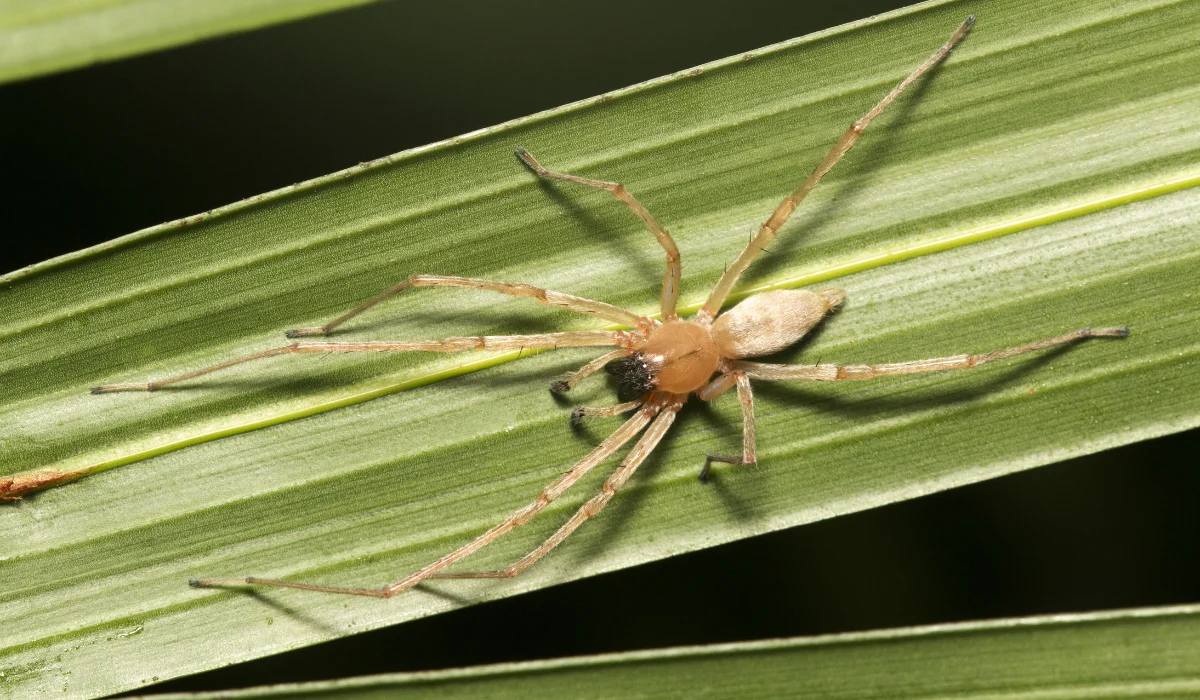Have you ever wondered where carpenter ants come from? These insects can be more than just a backyard nuisance. Carpenter ants usually emerge from damp or decaying wood, making them a concern for homeowners who might notice them around their property.
Understanding their origins can help manage their spread and mitigate ant problems in homes. Stay with us as we explore their habitats and behaviors for better home protection.
Key Takeaways
- Carpenter ants are drawn to damp areas and wooded surroundings, where they nest in decaying wood.
- Gaps in structures, poor ventilation, and landscaping near homes give ants easy ways to nest and enter.
- Prevention includes reducing moisture, clearing wood debris, sealing cracks, and ventilating spaces.
- Professional pest control can offer solutions for severe carpenter ant infestations.
WHERE DO CARPENTER ANTS COME FROM?
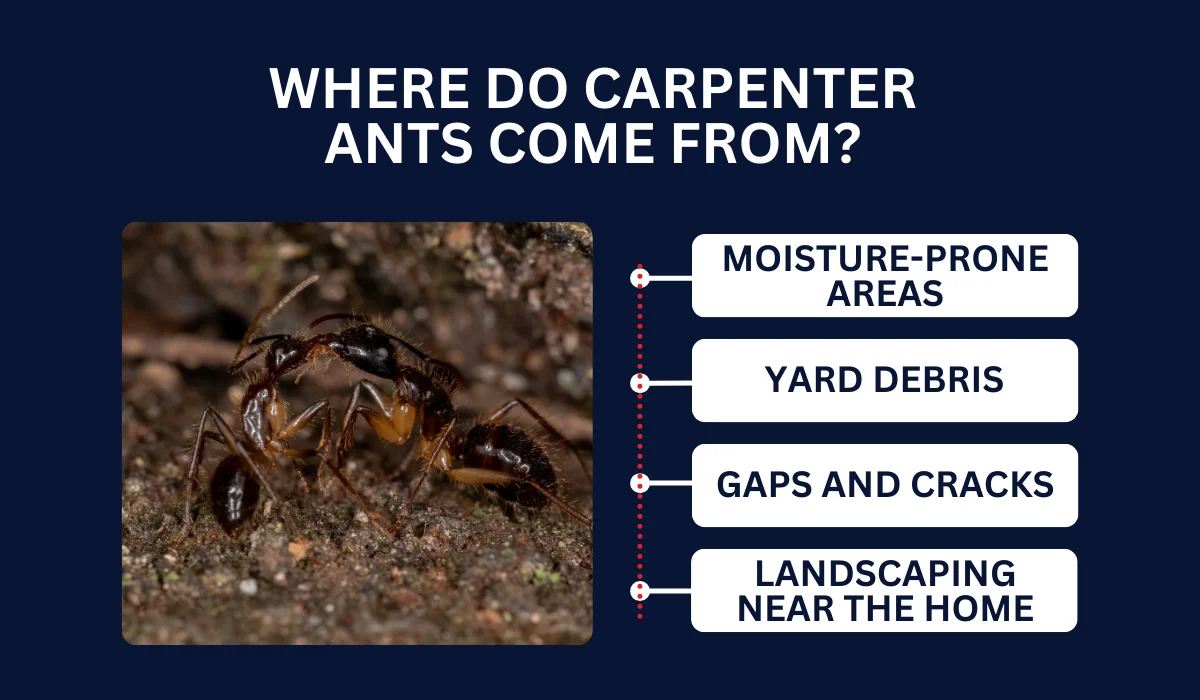
Knowing where carpenter ants nest and come from can help homeowners identify and address potential problem areas around their property. Here are some common sources that attract these pests.
Moisture-Prone Areas
Carpenter ants are drawn to places with high moisture levels, especially areas prone to poor ventilation. They seek out damp spots like basements, crawl spaces, and attics.
Water leaks from roofs and gutters can create ideal nesting site conditions, leading to wood decay that their mandibles can easily chew through.
Yard Debris
Yard debris and old tree stumps provide shelter and food sources, such as dead insects and honeydew from aphids, which carpenter ants eat. Black carpenter ants, in particular, establish satellite nests near homes.
When wooden items like logs, firewood stacks, or tree branches are left outdoors, these nests may form nearby, creating potential entry points for ants.
Gaps and Cracks
Gaps and cracks in a building’s structure can be entry points for these ant species. Door frames, wall voids, and small openings in the foundation offer easy access.
Swarmers can infiltrate and start new colonies indoors by entering even small, unsealed spaces, whether from a satellite colony or an outdoor nest.
Landscaping Near the Home
Features like plants and mulch near building exteriors can appeal to carpenter ants by providing nesting materials and potential entry routes.
Overhanging tree branches or ground-level debris create easy access points, allowing ants to find shelter and enter the home.
HOW TO PREVENT CARPENTER ANT INFESTATIONS
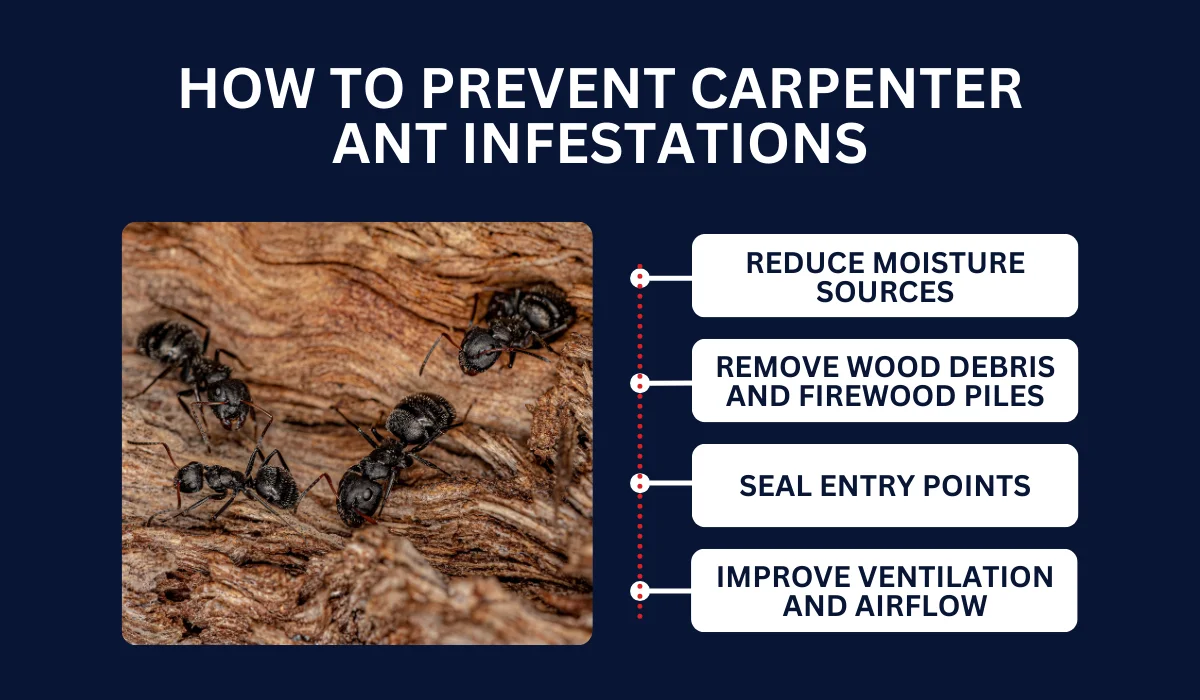
Carpenter ants are known to cause significant home issues by targeting wood structures. To prevent infestations, consider these proactive steps to keep your surroundings less appealing.
Reduce Moisture Sources
Managing indoor moisture problems is essential to prevent ants from settling in. Check basements, crawl spaces, and attics for leaks and fix any faulty plumbing. Consider using a dehumidifier in persistently humid areas, and ensure gutters are properly drained to direct water away from the home.
Remove Wood Debris and Firewood Piles
Keeping old lumber or firewood piles away from home structures can reduce the chance of attracting a carpenter ant colony. Stack firewood off the ground, away from living areas, and dispose of any decaying wood. Regularly clear fallen branches and tree limbs that might be the parent colony for ants.
Seal Entry Points
Carpenter ants use their antennae to detect pheromones and locate human and pet food. That’s why sealing potential entry points ranks among effective ant control strategies. Use silicone caulk to fill small holes or cracks. For larger gaps, consider using expanding foam to remove entry routes.
Improve Ventilation and Airflow
Proper ventilation can lower the chance of carpenter ant infestations within your home. To reduce moisture buildup, keep basements, attics, and other enclosed spaces properly ventilated. Installing vent systems can be beneficial if moisture remains an issue.
CONTACT OUR PEST CONTROL PROFESSIONALS FOR HELP
If you spot sawdust and wood shavings or hear rustling sounds within walls, it’s a signal to contact a pest control company. Their tunnels can weaken wooden elements, leading to structural damage and costly repairs.
Whether you’re in Baton Rouge or New Orleans, seeking expert help should be easy. For immediate intervention for a severe infestation, let Lajaunie’s carpenter ant exterminators tailor a solution that’s right for your home.
For more information about our services, visit our service page.
Related: What Smells Repel Carpenter Ants?
 By: LaJaunie's Pest Control
By: LaJaunie's Pest Control 